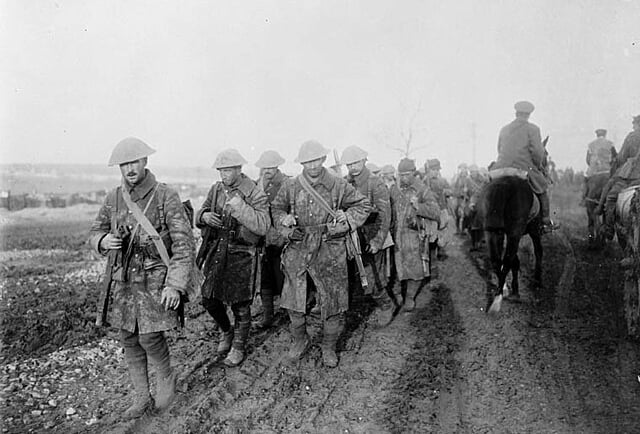Vivid Depictions of Regina Trench 1916
The Horrors of War, Mud and Blood in the words of Victor W. Wheeler


The fighting in and around the village of Courcelette on the Somme claimed 24,000 Canadians: Killed, Wounded or Missing. Thousands of other Canadians would also serve there and pass through the sector during their service. Fighting moved slowly and ground was fought over time and time again, leaving many dead of both sides without proper burial and instead in the every day living quarters of the soldiers that fought there. In his book, No Man's Land, Victor W. Wheeler provided a vivid first hand account of his experiences near Regina Trench in October 1916, whilst serving as a Signaller with the 50th Canadian Infantry Battalion from Calgary. The following excerpts serve to provide just a taste of what it was like to be a frontline soldier with the Canadian Corps in late 1916.
"The 50th were again sloshing a path to the front line, Regina Trench... Even before reaching Regina Trench we had lost twenty-five men killed or wounded - and we could ill afford to lose any more of our experience fighters. "
"Rubber hip boots had been issued as the only practical vehicle for moving about in the front line without sinking in the deep mud of Reguna Trench. Boots, puttees, trousers became so heavy and burdensome when coated with the Somme mud that the infantryman was quickly immobilized and in double risk of losing his life. Mud was two to three feet deep in the trenches."
"As I waded in my hip boots along the sector of the line near my signal station I found myself rubbing against, and unavoidably trampling upon, fragments of what a few hours earlier had been living, laughing men. One of the most unnerving sights was of a soldier's outstretched death-cast hand that pierced the mucky caved-caved in side of the trench at the very spot where I had set up my (Signalling) Station."
The fight for Courcelette and the Ancre Heights in 1916 was long, brutal and fought in the most savage conditions. Many of those that were killed near Courcelette were never found or positively identified when found leaving a huge number of missing. In fact, nearly half the names on Canada's National Vimy Memorial commemorating Canada's missing of the Great War, commemorates men who fell at Courcelette. The events and losses of Courcelette touched a staggeringly large amount of families across the Dominion and it's effects can still be felt, although lots of the horrors associated with the place have been forgotten.